Submitted by Asmaa Kamaly
Lina Fel Madina featuring urban narratives
Egypt Architecture News - Nov 24, 2021 - 14:44 2201 views
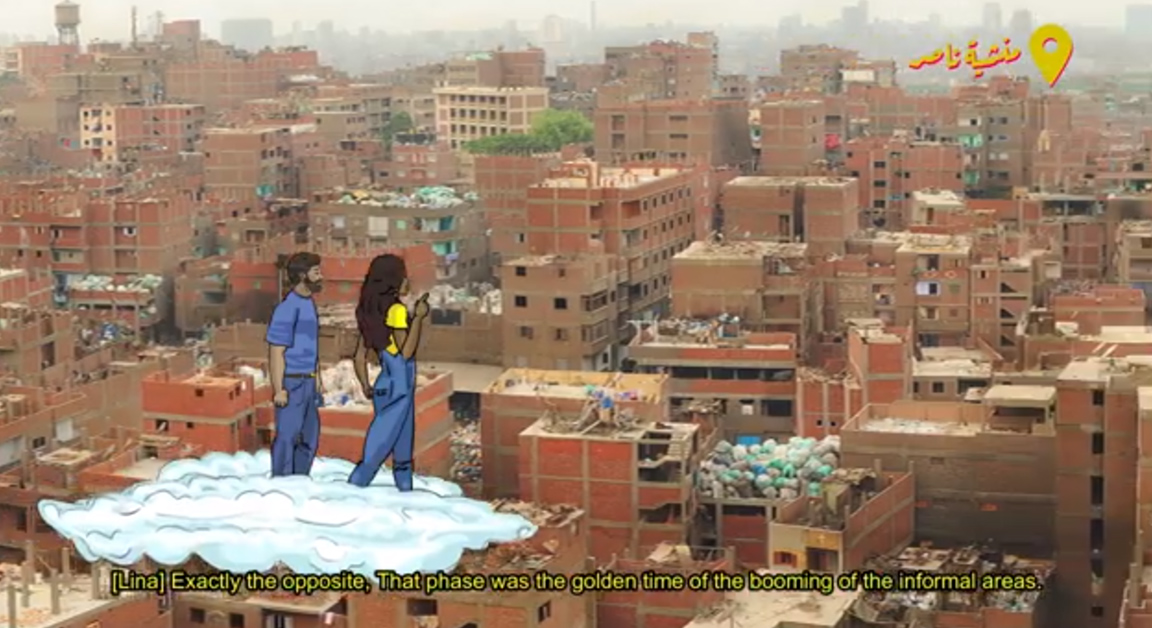
Participation is a widely used notion. It is used in many social contexts, from working life and technological development over urban and regional planning to general politics and everyday situations. Yet, “Community Participation” is an intricate expression, as it has no specific definition, limits, boundaries, or established criteria with which it can be measured.
There is a collective consent on the acknowledgment of the community value participation in the built environment development processes. Thus, by facilitating community involvement and public participation, direct and more sustainable outcomes will be achieved. When addressing other outcomes and sustainable results, studies conducted by planning scholars have also highlighted how local stakeholder participation during the planning stage and implementation of policies can in fact generate more trust, credibility, and commitment when compared to alternative approaches.
In the technological era, we are witnessing saturated content from various community actors in favor of multiple and numerous objectives, agendas, and purposes that make the people consciously or non-consciously captivated with their content whether this for ideas, projects, or goods. Of course, some might be in front other than others or fortunate enough to be given the advantage which will question the representation issue on the available multiple social platforms including Facebook for example. As indicated in Zucked the platform is being manipulated by some very bad actors.
The very concept of social platforms in which numerous and contradictory points of view and perspectives are being discussed was not novel. The agora in old Greek was a public place and socially public assembly for political debates and various issues to deliberate allowing the public to be exposed to multiple views.
These socially technologically platforms could be perceived as an extension of public life and subsequently public participation with various social groups.
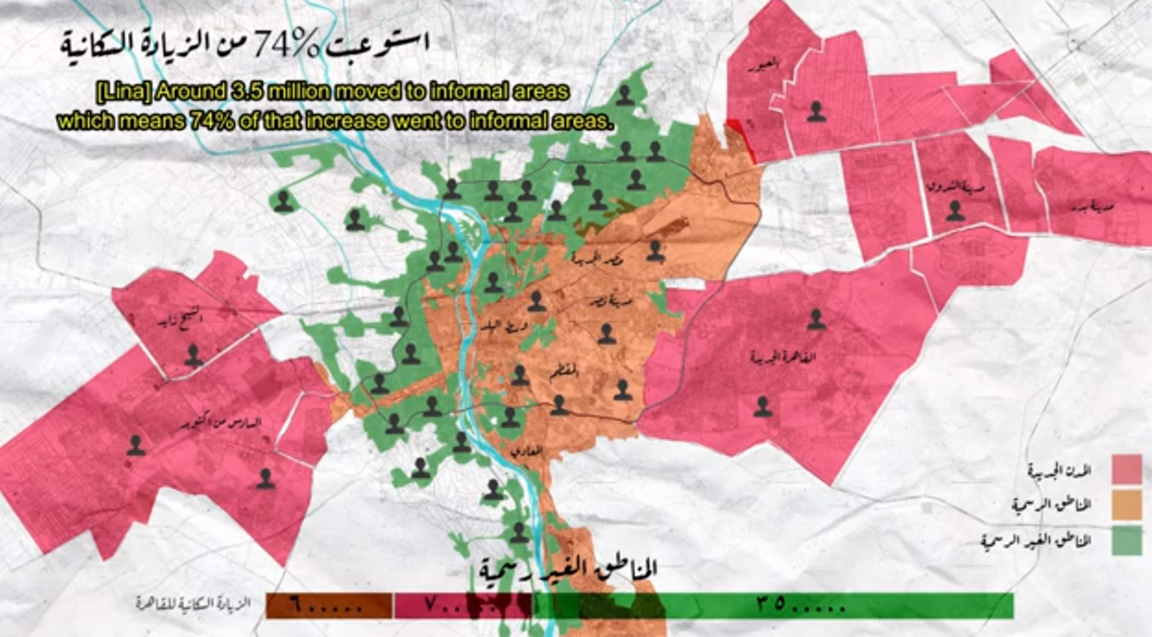
In Egypt, an initiative called Lina fel Madina has commenced tackling public participation and present urban-related content on Facebook and YouTube in form of narratives to socially raise awareness with pressing issues and intellectually mobilize urban notions.
WAC's Egypt Country Reporter Asmaa Kamaly had a chance to speak with Ahmed Zaazaa and Omar Al-Tawansy, the founders of Lina fel Madina in an exclusive interview.
Read the full script of the edited interview of WAC below:
Asmaa Kamaly: Could you introduce us to Lina Fel Madina or Lina in the city and Lina is aiming to communicate?
Ahmed Zaazaa: Lina, is one of the city users and dwellers, who is through the video and visual content is taking the audience on a journey around the city on which a discussion is embarked related to the architecture and urban scene in Egypt, in addition to the life in the city from architecture and urban lens. Lina Fel Madina was initiated because of our profession and interest in the urban and architecture research field. However, the research publications and academic work were the concern of a certain circle of those who are interested in the urban and architecture domain. In this initiative, we aimed at simplifying what could be perceived as purely academic into something understandable for broad social circles in the city since all our research and work concerned the city. From this approach, we decided that we need to engage with more people or target groups to communicate our research work to them. This could be at the same time benefiting them to understand the current urban situation in a more simplified away from sophisticated and technical terms. Just a clarification, the simplification of the academic work comes from anything but the sense of grandiosity since it is completely understandable if someone who is not specialized in a certain topic to be aware of all the technical terms as for the physician if he wants to communicate something in non-medicine specific terms.

Asmaa Kamaly: From what you have indicated, the initiative aspires to communicate urban and architectural topics to non-specialized groups/people, however, what could make non-specialized to be interested in your content, to be even more knowledgeable on something like the history of Cairo, could you further elaborate on that?
Ahmed Zaazaa: I just want to give some notes on the initial planning. The first four episodes of Lina fel medina were an experimental trial for the technique of producing animated urban-related content to the public. The content was animated because it would exempt us from the hectic process of getting shooting and directing permits in the streets that are strictly administered for security purposes. The animated method gives opportunities to better illustrate various shooting views and angles of the city/ urban settlements that would further articulate the understanding of the city. In those four episodes, we tackled the topic of Cairo urban development and got feedbacks from non-specialized individuals on this pertinent to how they perceived the episodes. Additionally and within the episodes, we wanted to correct some terms or terminologies widely spread on the urban-dwelling by reintroducing other terms, for example, the slums term or its corrective term the informal areas and how people and public are referring those areas to illicit activities and practices such as terrorism, extremism, drugs, and others as articulated in some Egyptian movies. In this sense, a lot of people are consciously associating these areas with certain activities while in fact the reality is considered to be the opposite. Therefore, we wanted in the first season to introduce the story of how these informal settlements/ areas have emerged in the city of Cairo historically.
Omar Al-Tawansy: No one disagrees that we wanted to provide an easy to assimilate information to the non-specialized person. However, we want to focus on the well-bounded relation between the city and its inhabitants and dwellers who are genuinely interested in their city. We wanted to emphasize and concentrate on the importance and significance of the citizen to understand his/her city in which he lives and ask questions like how the city can impact and influence him/her and how he/her can influence/impact it back. For example, due to the Covid situation in Egypt, some citizens and city dwellers have realized how vital is to have access to public spaces.
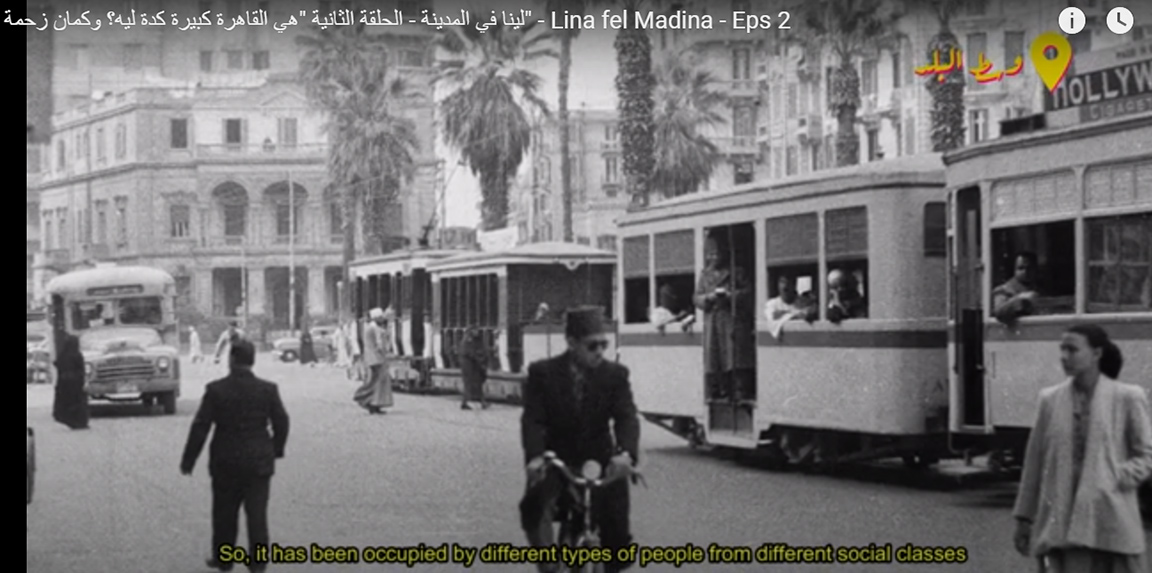
Asmaa Kamaly: Lina fel el Madina or Lina in the city, do you mean by the city the urban part of the city or your definition for the city is the general agglomeration of buildings or settlements whether in the rural or urban areas?
Ahmed Zaazaa: Well, we are willing to discuss other cities than Cairo for sure, and it is extremely encouraged for others to move to other urban areas other than Cairo. However, in the first set of episodes, we wanted to discuss Cairo and precisely the topic of the emergence of informal settlements. Nevertheless, Omar and I wanted to articulate cities other than Cairo in a broader view which could be even outside Egypt to better understand the urban landscape and present them as case studies from which we can learn and refer to in our study of our city. For example, cities in Sweden, France, and Switzerland have not destroyed the streets of the old core of their cities for being narrow and inaccessible for services cars like ambulance cars. This is one of the justifications some claim in Egypt for destroying the informal areas. Instead, they offered unconventional solutions to address those issues. What we wanted is to concentrate mainly on topics and issues through which the city can be more explicable. The backstory of Lina included her moving from Damanhour. Hence, in one of the upcoming episodes, we wanted her to visit Damanhour and explore villages and other urban settlements. We are mainly proponents to the fact that there is an over-centralization of Cairo witnessed in Egypt in the past 4 or 5 decades. There is even a consolidated perception that the Cairenes are the ones who have access to a good quality of life compared to the other parts of Egypt due to the centralization of Cairo in Egypt. In fact, the majority of the Cairenes themselves or their descendants are from outside Cairo. In this regard, in Lina fel madina, we want to address the urban and architectural situation in other cities, not just Cairo. We do not seek to provide solutions to issues but offer meaningful discussions from different perspectives and perceptions taken into consideration numerous dimensions with multiple stakeholders from the public.
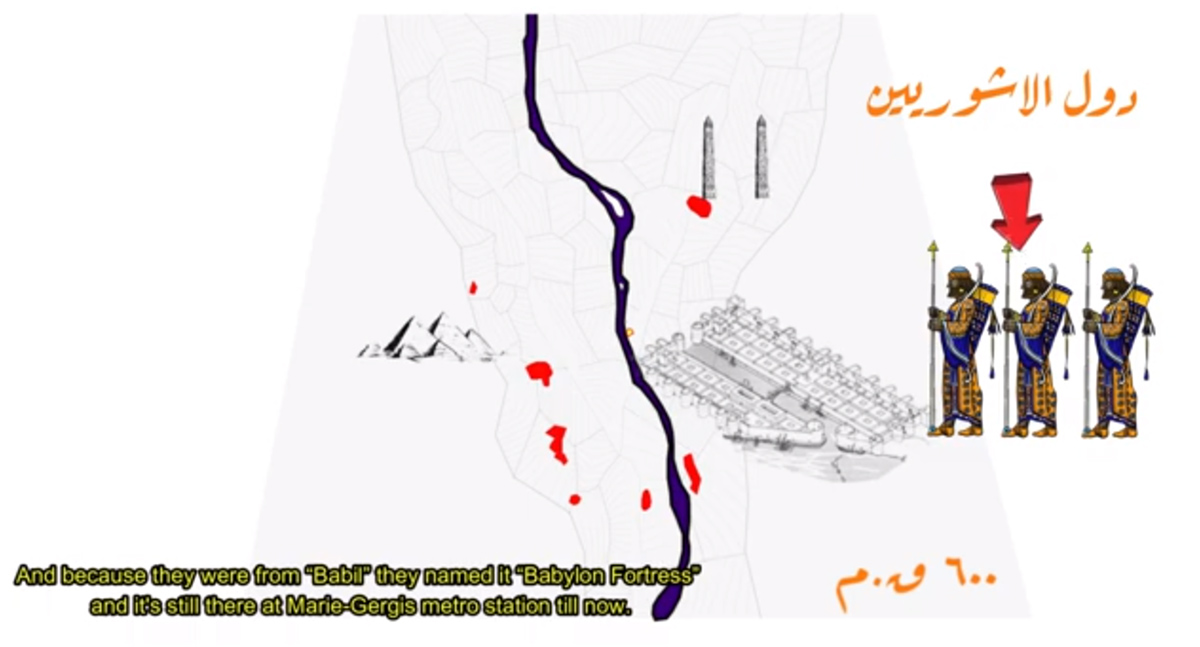
Asmaa Kamaly: Speaking of the backstory of Lina, the main character in all the episodes, she informs us more about the city with a historical background, did you want, to some extent, to emphasize profoundly the cemented relation between the history and urban situation?
Omar Al-Tawansy: Well, we were not trying to connect the history to the current urban situation as it is already, in so way ways perceived, connected. Furthermore, generally speaking, all sciences are somehow interconnected, particularly when it comes to the study of the city in which we live and how it has been morphed to be the current city. This requires the study of several overlapping city layers demographically, socially, politically and more which have been resulted in this dynamic structure. The point was mainly integrating this in the storytelling method to indicate the city elements and factors constituting the already existing city like Cairo as presented in the first season. Of course, there is a historical dimension as well as other sciences and fields of study that are undoubtedly contributing to the city formation.
Ahmed Zaazaa: In our discussion and brainstorming to put together the backstory of Lina the main character in all content presented even though this will not be tackled in the picture itself. We dealt with the animated content as a dramatic piece of work done professionally. Therefore, the mentioned information on Lina related to her history studies the audience may interact with and answer their intrigue and curiosity as to why could Lina has had all this info in the first place to explain the urban situation. The same concept could be related to other info on Lina like her living in hosary housing project in October city because in the upcoming episodes we want to discuss the new settlements. We even kept discussing the gender of the main character of these episodes before coming out and whether it will be he or she and we settled on the preference to be a she for several reasons. The first issue is the female representation issue in the visual works whether animated or not. Hence we want to adopt a more gender-balanced perspective for the lack of female representation in the existing presented dramatic works. The second issue, we wanted to offer a shifted perspective toward females in city planning which is not considered more often since most of the city planners are males and the field is considered to be male-dominated. On this point actually, a lot of books currently discuss trendy notions addressing the issue of women's participation in city planning, their experience, and how the city would change if planned or experienced by women. For example, the distribution of the architectural spaces could be perceived differently if the female perspective is taken into account. Hence, in Lina fel medina, we wanted to address gender-related topics in the city which will make it difficult to address them from a male main character. When discussing the gender topic, a group of gender specialists will be invited to the discussion to view several issues from a gender lens conferring issues pertinent to women experiencing the city elements including urban public spaces, transportation, architectural spaces and so more.
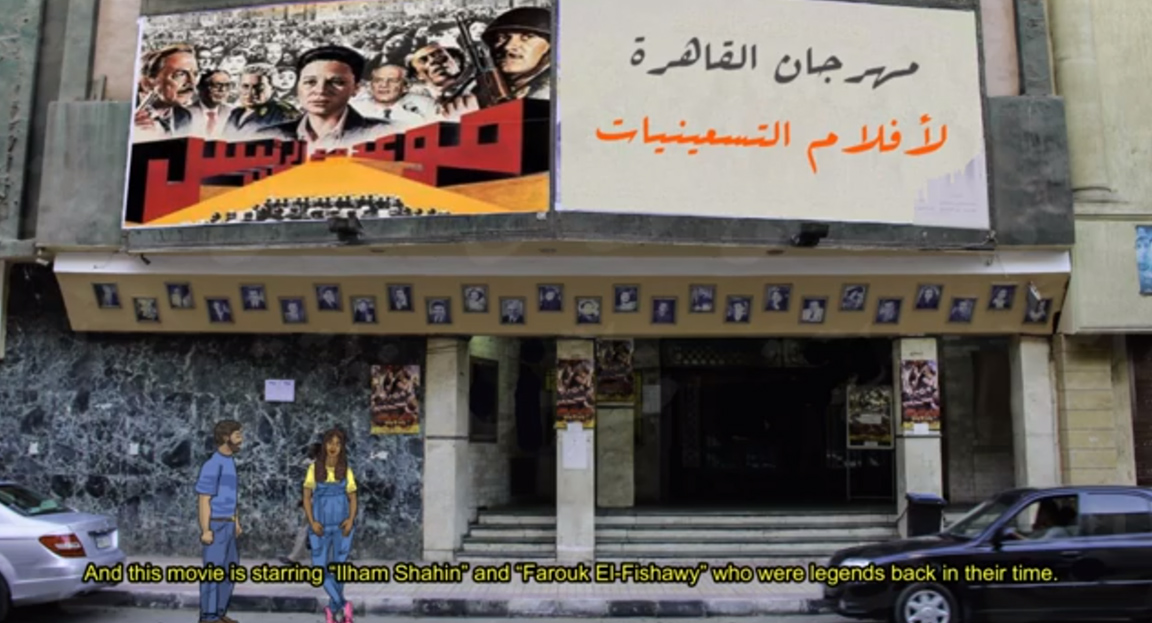
Asmaa Kamaly: Could you give a brief on the initiation phase of the initiative in terms of the concept, funding, and execution in addition to how long have been working on this project?
Ahmed Zaazaa: The initiative has started in late 2020 and the beginning of 2021 and is considered one of the projects affiliated with 10 TOOBA, a company specialized in the production of academic studies concerned with the interdisciplinary and cross disciplinary fields related to urban and architecture studies. Additionally, the company conducts a participatory planning approach with the various community stakeholders within marginalized urban areas. Omar and I had from so many years had the concept of spreading and disseminating the knowledge in the academic studies to the public in a more simplified language to act as an interactive method of reaching out to the public and to raise the public awareness and perception with the urban and architectural issues. Later on, we applied for small grants for projects related to the Danish Egyptian Dialogue Initiative (DEDI) on which we applied and granted about a third of the total project cost. Then, we found a working team on the project all of which have worked on the project not voluntarily but with not very considerable remunerations compared to the market particularly the technical specialists in the project. However, all the contributors to this project have worked enthusiastically on the project since they recognize the meaning and message behind it.
Asmaa Kamaly: Could you give a brief on the team members in the project?
Ahmed and Omar: The project included different expertise in making it. Starting with the voice-over that was held by 3 persons; Nouran el Marsafy as Lina and Mohamed el Mallawany as Mohamed. And both Nouran and Mohamed are architects and urban designers. And Zeyad el Tawansy, who played the voice of all the other characters. The characters' designs and illustrations were made by Mohamed Khaled, and the animations were by Ali Khaled. The main music theme was composed by -Kosmikflow-. The writing process included collective workshops between the project’s team, and also included consultants from cinema and theater fields.
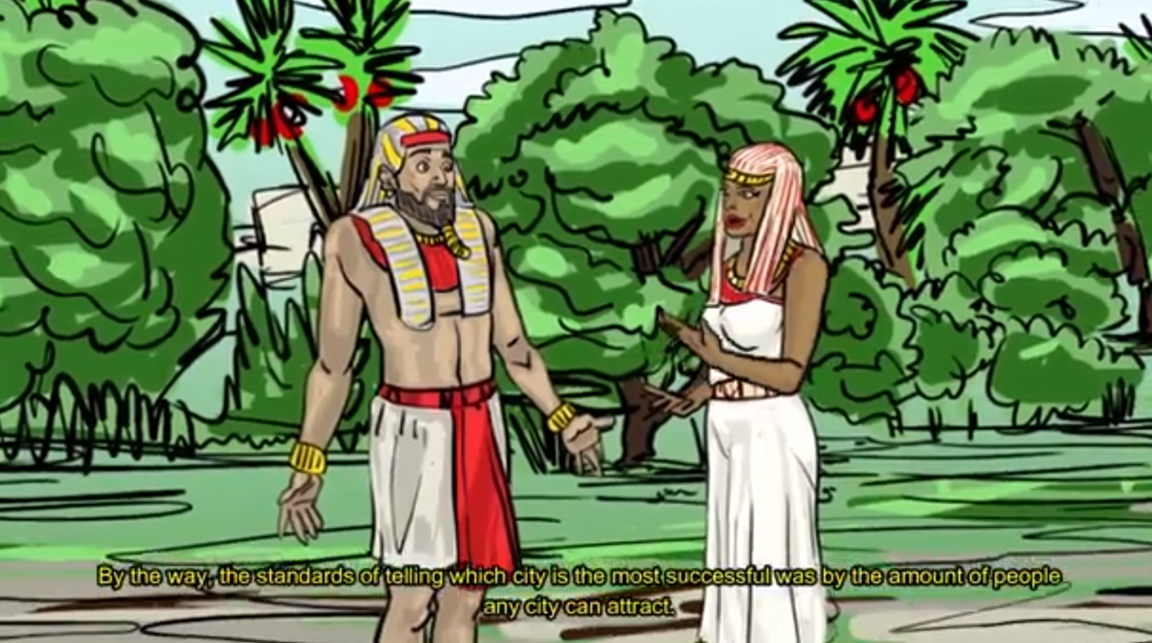
Asmaa Kamaly: What are you currently working on in the project of Lina fel medina?
Ahmed Zaazaa: At the moment, we are working on a pitch episode for the second season which by the way will be completely more enhanced technically apart from the first season. Also, this is a pitch episode because we will pitch it to producers or organizations who might be interested to fund the project in the second season.
Asmaa Kamaly: Concerning the content/script/writing process of the project of Lina fel medina, who are the ones responsible for this part? Do you have writing workshops by specialized professionals in the urban / architecture field or others?
Ahmed Zaazaa: Well, I, mainly write the episodes but usually take into consideration the opinion of Omar in what I write to add his perspective as well. Furthermore, we have showcased the episodes' script to professional scriptwriters, one of them is currently working with Netflix Holland. They were reviewing the episodes since we are not specialized in converting the academic content into dramatic production targeting the public audience to make sure this content will be smoothly assimilated.
Omar Al-Tawansy: We were consulting with the community stakeholders and the public when the experimental trial season was out. We wanted to make the community participate with their feedback and opinions. We got opinions from dramatic scriptwriters in the production process since we targeted a public audience and we did not want the content to be heavy for the public audience. We try to extract meaningful modifications we could work on from all the feedbacks and opinions we got from both specialized and non-specialized individuals and groups. I personally have joined Goethe institute in Cairo in a residential artists program in which I and the team have worked on enhancing and developing the content for the project. The program has professional specialists in the drama field like theatre directors from Switzerland who have contributed significantly to the project content.
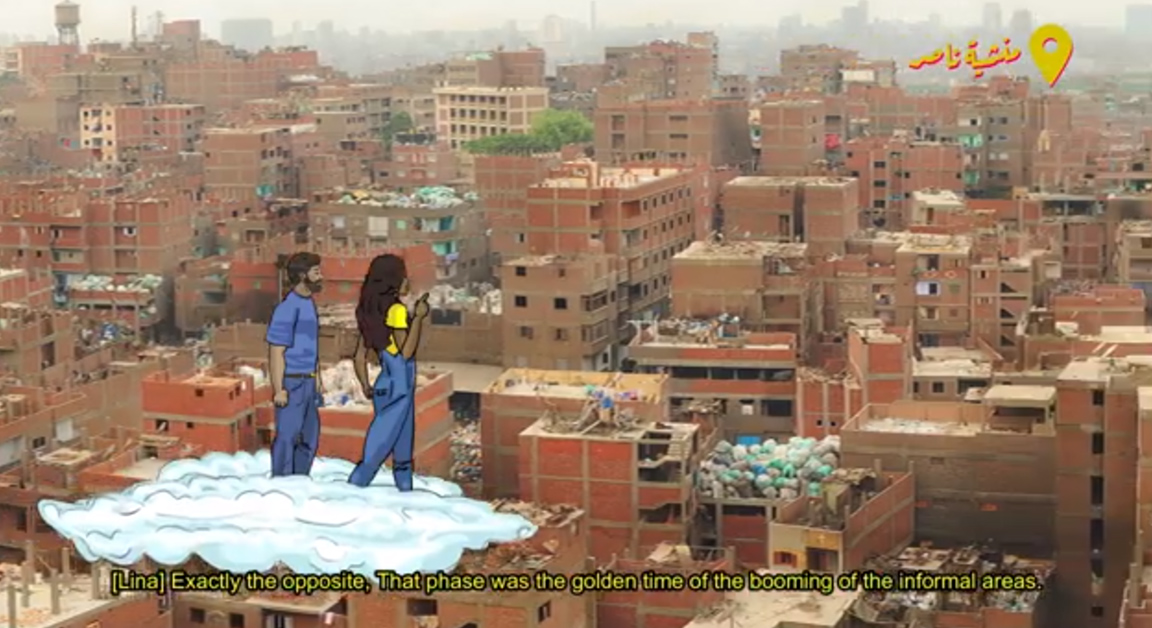
Asmaa Kamaly: What are the challenges and difficulties faced by the initiative?
Ahmed Zaazaa: Animation as a tool was an entirely new world for Omar and me. Although we worked on some research before starting the project, and we even traveled to Denmark and had meetings with professional animators, but there were a lot of issues that we had to re-invent the wheel to solve. As much as the animation tool provided us with freedom of movement and better imagination, but also dealing with it as amateurs imposed a lot of limitations on the flow of events, in the episodes. That’s why we are now changing the flow of the series, to be a mixed media of collages, drawings, and real videos. Also, the content of the Zero season was just a trial. We are now facing new challenges concerning how to tackle issues, rather than tell a historical story.

Asmaa Kamaly: What are your prospects for Lina fel Medina? Do you want to introduce new topics for discussion or do you have other projects for consideration?
Ahmed Zaazaa: I do not know if you are familiar with a show named Al-Daheeh which discusses and simplifies scientific topics. The show is widely and publicly acclaimed for its simplicity in explaining complex or intricate subjects. In the upcoming seasons/episodes, we wanted to discuss other topics and widely used terms including mobility, gender issues, and women, housing, new urban settlements. All these issues are not only urban-related to urbanists but significantly crucial topics integrated within the city components that all the city dwellers are involved in in one way or another. We indeed wanted to further discuss more currently pressing topics in the public realm that the public could relate to significantly including the public spaces and eroding the trees from the public streets, for example. The additional topic is the Tok-toks presence in the streets and how they could facilitate mobility in some areas. From an unbiased point of view, in the Lina fel media, we want to discuss scientifically urban issues in simple terms for all to contribute to the planning vision. We do not want to take a side or violently be in conflict with the other views but instead to analyze the pros and cons of the discussed issues. The aim of this project and initiative primarily is to raise awareness not just by stating facts but the meaning and significance behind what is taking place. For example, currently, some research papers on Kuwait have addressed its temperature rise and its correlation with cutting trees from the streets. When talking about raising awareness, it is not only targeting the public, it is even more fundamental for organizations and institutional structures specifically if it is in a non-conflicting manner. For the specialized professionals, it is key and needed to understand the subsequences of each line drawn in the architecture or urban plan and how this will have an impact on the people's lives.
Omar Al tawansy: For sure, our aim is public awareness and cognizance of the issues we all are witnessing. However, there is also this state of perceptions exchange between the individuals resulting from the discussions themselves. It is the fact that the individuals will discuss those notions and issues further to even suggest what is the most compatible for themselves as a community and city and what could derive this to be more their city-related and based on what. It is the significance of creating somehow an open space for discussions aiming to fathom what is being discussed and express your point of view from it. Hence, people could even discuss these opinions without any scientific referencing. If this only happened, it will be more than satisfactory as an objective for the initiative.
Asmaa Kamaly: What could you advise those interested in founding an initiative concerned with architecture and the urban field?
Ahmed Zaazaa: Generally speaking, if there are initiatives concerned with raising awareness, the simplifying of the information or content is key in all fields whether architecture or urban field, or others. Moreover, it is essential to find new presentation techniques and methods to address the content not necessarily in the digital or virtual form to act as a catalyst for public interaction with the content itself. One of those techniques that were seen lately is public theatre performances in transportation like Metro. Also, there should be a very well study and consideration of the other side's conflicted opinions and views as well.
Input via Lina fel Madina.
Images courtesy Lina fel Madina.
